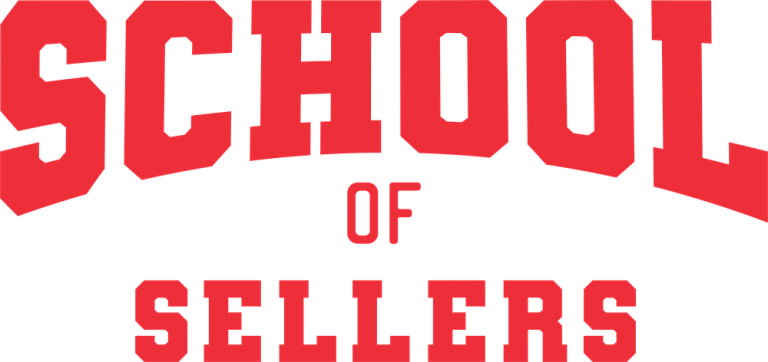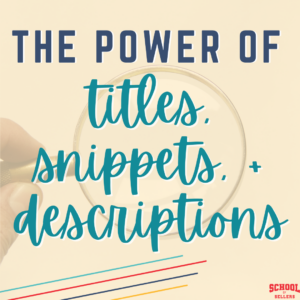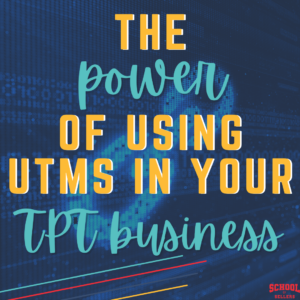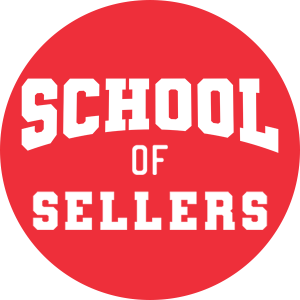Episode Summary
Listen, if people can decorate for Christmas the day after Halloween, I can make my business plans for 2022 in November. But for real, today I am giving you the inside scoop on how I make my business plan for the new year—the *entire* year—before it even begins. Follow along as I give you an outline of my planning process, my dos and don’ts for business plans, and other tips for making this year your best year yet.
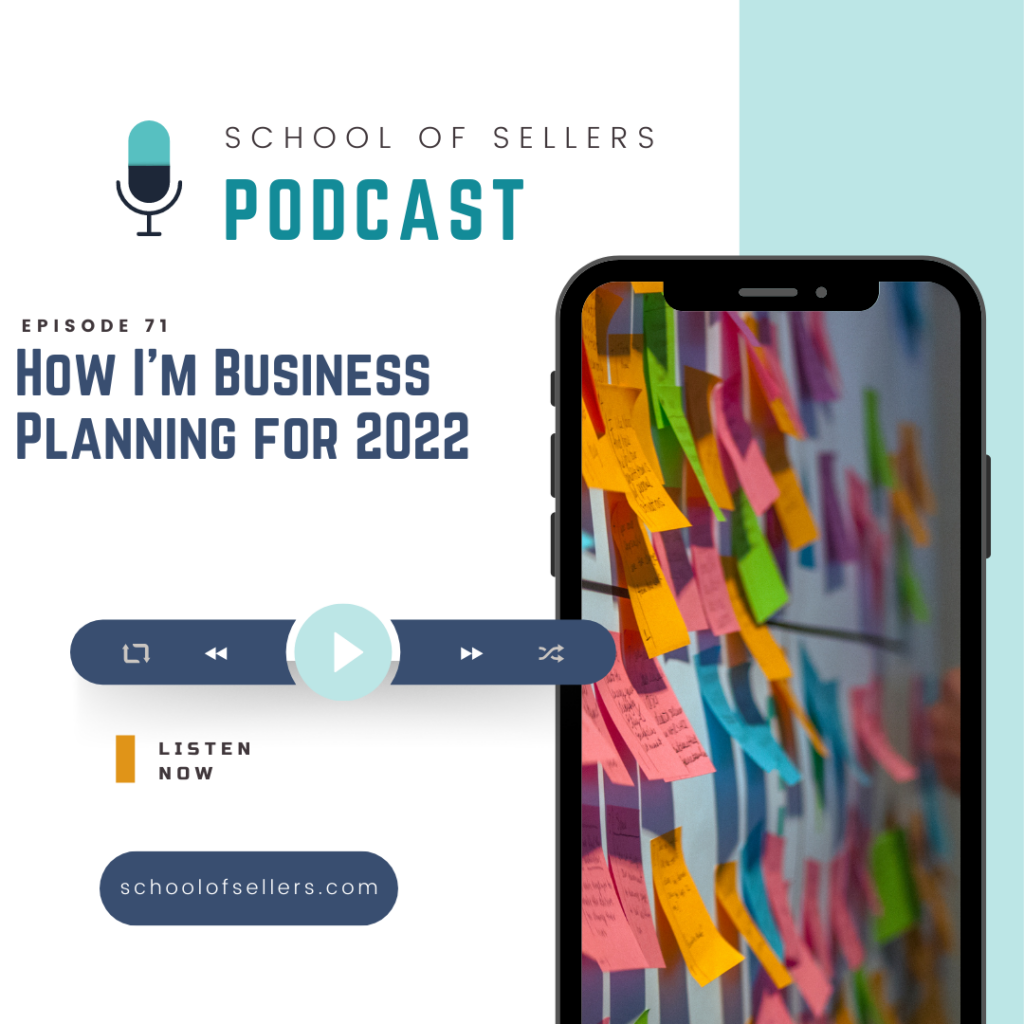
This post may contain affiliate links. As an Amazon Associate, I earn from qualifying purchases.
How I’m Business Planning for My TpT Business in 2022
I feel as though at this point in my School of Sellers journey, I can quite comfortably say that when people probably hear my name, they most likely think systems, plans, and things like that. So today it should come as no surprise that what I’m super excited to talk to you guys about today is how I plan for my business every single year. Because while there is a degree of daily and weekly and more of that spontaneous planning that happens in our business, the real backbone of our planning happens when we sit down and we get super strategic and put time and effort into planning out our whole entire year.
It might come as a surprise when you hear that I actually like to plan out my whole entire year before it even begins. Not only that, but I like to plan super early. When I say super early, I’m talking like November, early December at the latest. If people can decorate for Christmas the day after Halloween, then I can plan for my business a couple weeks ahead of time. Also, I’m totally team decorate early so I’m not bashing you guys. I am on the same side as you.
Last Year
So let’s back up to last year around this time. It was the Fall of 2020. I sat down to plan my business because I thought to myself, Thanksgiving is right around the corner and after that, Christmas is going to be here and then New Year’s and it’s all going to happen so fast just like it does every year, right? So even though it happens the same way every single year, I still act like I’m like surprised every year that the new year’s coming so quickly. Last year was the first year where I made it a point to sit down and get all of my planning done before Thanksgiving. I knew I was going to be so busy with other things for the rest of the year.
And it was at that point that I thought to myself, you know what? If I’m feeling this way, then I bet other people are too. And that’s how Jumpstart Your Year began! And that is, if you’re not familiar, Jumpstart Your Year is the planning workshop that happens every year with School of Sellers on December 1st. So that’s kind of what was the catalyst for Jumpstart Your Year. But ever since then, I’ve had a lot of questions about my planning process in general and how I’m able to take a whole year’s worth of plans and actually make it make sense and make it something that might actually end up happening.
A Brief Overview of My Planning Process
So that’s what I’m going to do for you today. I’m going to kind of give you a brief overview of my planning process. Obviously, if I gave you the whole thing, we’d be here for hours, and that’s what the workshop is for. But I’m going to give you kind of a crash course in planning your business. But it’s really important before we get started that you have to understand that we can only plan for so much, right? So our goal is to plan the entire year-ish. We’re going to do our best, but we have to keep in mind that we are not fortune tellers.
We Can’t Anticipate Everything
Even though we can anticipate a lot of what’s going to happen in our lives and in our business in the next year, we can’t predict everything. So you have to have a certain degree of flexibility when it comes to planning out your business for an entire year. Now with that being said, I give myself an informal rule that I will go through with 80% of these plans.
The other 20% are susceptible to getting crossed out. Maybe those plans are going to morph into something else. But if I give myself that kind of flexibility, it gives me the focus I need to stick to the majority of my plans that I’ve set. It also gives me permission to back away or to change things up when I know in my gut that what I had planned isn’t going to pan out. Because things do happen. that’s just life.
My Planning Funnel
The way that I plan for my business is very systematic in that I follow a very certain procedure from start to finish because I want to make sure that I cast as wide of a net as possible so that I don’t have any pieces that are missing and I’m not missing any crucial components as I make my decisions going forward for the new year. I like to envision my planning process as a funnel.
Top of the Funnel: Reflection
So the top of the funnel, and if you could think about it like a tornado kind of, the top is kind of rounding up everything about the last year. You can use previous years for your reflection and business planning. But typically for this specific planning, the business planning for the upcoming year, I like to stick to just the last year’s worth of data because it’s the most timely and the most reflective of my current business’s needs.
So that top of the funnel planning is getting all of the stuff from the last year, kind of like a one huge cleanup session of all of our data, everything in one place and we’re going to look through it and make sense of it.
Middle of the Funnel: Sifting Through the Data
Then the middle of the funnel is kind of shaking all that data out and sifting through it and getting rid of the stuff that we don’t want to keep and then seeing what’s going to settle or see what’s going to actually carry over into the next year.
So some of the things that we discovered from looking at the last year of our business, we decided we’re never doing that again, that’s not going to be something that we carry into the next year with us, but other things we’re going to really notice, like certain things that worked really well for our business or certain tactics that we used in marketing and just little bits and pieces along the way that we’re going to latch on to and use as we inform our business decisions for next year.
Bottom of the Funnel: Make a Plan
And then finally, when we get to the bottom of the funnel, that’s where we put all of the pieces together and fill in the planner with everything you want to happen in the new year.
Now in the workshop and in my specific planning process, this looks like three different phases. So we have the first phase which is where we look back and we collect all of the quantitative data but we also focus equally on the qualitative side of things. Because I have found that in my planning, when I use all of my data to inform my future business decisions, it’s most often the qualitative piece, the actual feelings I have about my business that tend to result in the biggest changes in my business. And that’s always the most transformative experience for me is when I sit down and reflect on my business from a non-numbers standpoint. However, that might just be my personal preference.
Data to Look At As You Reflect
So when we do the workshop we give just as much value and attention to the numbers as well as the feelings. So it ends up giving us a really holistic view of everything, and the clarity we get from examining every single corner of our business is just incredible. If you’re someone who’s thinking about DIY-ing your business plan and you want to get started sooner than later, then the categories I love to look at when I am collecting that data is email marketing, long form content, short form content, and your store and your products.
So that can mean different things to different people. Email marketing, you might not have an email list. So if that’s the case, you obviously don’t have to gather data for that. Short form content can be mostly social media. That’s what people typically think of when they hear short form content. So that would be all of your insights from Facebook, Instagram, all of those fun places and also, Pinterest. I think the majority of sellers these days are using Pinterest to grow their business. So that’s another set of data to collect.
And then for your store and your products, you might have data from the TpT website. You might also have data if you run your own store from your site like a WooCommerce situation or something like that. So you’ll want to collect data that shows you information about your sales and earnings and conversion rates as far as your products are concerned. And then you’ll also want to gather the long form content data which is the blog or the podcast or the video platform that you use to share your longer pieces of content.
You Don’t Have to Do It All At Once
Now I will admit that numbers are one of my least favorite things which is why I like to include like the most crazy, detailed analytic sheets with Jumpstart because I’m the type of person that needs my hand held every single step of the way when numbers are concerned because otherwise, my head swims and I just have no idea where to start and where to go from there.
But my best advice for you in the numbers stage is to set a timer when you are collecting your data because it can get really heavy and really tedious really quickly and to tackle that data maybe in like 15 to 20 minute chunks at a time. So maybe sit down and say, okay, for this 15 minutes, I’m going to only look at my email numbers and for the next 15 minutes, I’m only going to look at my Facebook insights and so on. It also helps when you’re going through your numbers and doing that type of reflection to keep coming back to your stuff and not sit and force yourself to do it all in one sitting.
There’s something about coming back later in the day or even later in the week with a fresh set of eyes and a brand new mindset, and there’s something that happens when you walk away that just gives you that renewal that you need to really jump right back in and give it your best effort.
What will you continue doing and stop doing in your business?
In phase two, I like to take all of that data and start to make sense of it. So the biggest thing I do is decide what I want to continue doing in my business and what I want to stop doing. These might be super specific things. For example, maybe there was a really good email subject line that I used that got crazy open rates compared to my other emails. So maybe I want to start seeing how I can replicate that style in that type of subject line in emails that I send going forward. It could also be something much bigger.
Maybe you launched a brand new product line last year and it took off and you are going to spend the next year focused on building that one product line. The old phrase, if it’s not broken, don’t fix it has never been so true as it is when you sit down to look back on your year and plan the year coming up. Continue what’s working and stop what’s not.
Consider Choosing 1 Main Focus for the Year
In Jumpstart specifically, I encourage teacher sellers to choose one main focus in every area of their business. That way you’re not left with a laundry list of things to do for every single corner of your business. Choosing one focus might sound slightly limiting when we say it out loud. But if you think about choosing one focus in your business, your one focus is actually going to create an umbrella of tasks for you to tackle throughout the year.
So for example, if your one focus is growing your number of subscribers on your email list, that could look like creating more lead magnets, writing more blog posts where you link to those lead magnets, sharing more links on social media. So even though we’re picking just one focus, we’re actually covering our bases for a whole entire year. And then phase three of this whole planning process is my favorite. Because at this point, I feel like my leg work is done.
I’ve crunched the numbers, I’ve done the reflections, I’ve chosen my focus for my business going forward. And now it’s almost just like filling in the pieces. It’s like putting in the last few pieces of the puzzle, and in phase three is where I get up my planner out, I write all of my notes for what I plan to do from a content standpoint every single month, from a social media standpoint every single month. And it’s not hard because I’ve already taken a really good look at what works, what doesn’t, what my numbers were like, and what my business has taught me over the last year.

A Few Final Tips
Of course, there’s no one-size-fits-all approach to planning. And whether or not you plan on joining us for Jumpstart Your Year or you’re going to do your business plans at a later date, I do have some recommendations for you before we sign off from this episode. The first one is something I’ve already mentioned but it’s worth repeating.
Don’t do it all in one sitting. Make sure that you give yourself at least several sessions where you sit down and look at those numbers and go through those steps and really think about it. Take breaks, come back to it with fresh eyes and a new mindset because it’s going to give you a much better experience and higher quality plans than it would if you were to try to rush it and fit it all in in one sitting.
Work with Friends!
Next, I highly recommend trying to get together with at least one or two friends to do your business planning with. TpT can be a really lonely world simply because people who aren’t in the TpT world just don’t get it. So it can be really helpful to have at least one other person during your planning session to use as a sounding board to bounce ideas off of or brainstorm things together or maybe troubleshoot. That was actually one of the main missing pieces in my own planning process, which is one of the reasons I thought doing Jumpstart was such a good idea.
And this year, we actually have gone even further and have added a few more in-person face-to-face types of calls and opportunities. You can ask other sellers for ideas and questions and problems that you’re having in places where you’re stuck. And you can also talk to sellers who have similar goals as you to really think about the best possible ways to get to those goals. Accountability and camaraderie can just be amazing, amazing things. So I highly recommend finding someone who can be your planning buddy.
Invest in a Planner
And finally, I think it’s worth it to invest in a planner that you love. Sometimes this means it can be difficult to find the one that’s the best fit for you. But I recommend asking around, ask other people in your niche what planner they use and which ones they love. And these can be people, just other TpT sellers or maybe you want to go a step further and ask TpT sellers who create products similar to yours and who serve similar audiences because that might be the main difference between a planner that you kind of just like and a planner that you love.
I know I am biased, but I hope that everyone joins us for Jumpstart this year! It is my favorite time of year because well, I mean I love the holiday season anyway, but adding in Jumpstart just makes it over the top magical for me. So I’m basically going to be the happiest person on earth between November and December. So I hope you join us. But regardless of how you plan and who you do it with this year, I hope that you can find some time to sit down and take a good, hard look at all of the amazing things you’ve done in your business and use it to propel your business going forward. And I hope that you all have the best year yet.
Conclusion
Links mentioned in this episode:
Looking for another way to get this episode? Download the transcript for How I’m Business Planning for 2022 here!
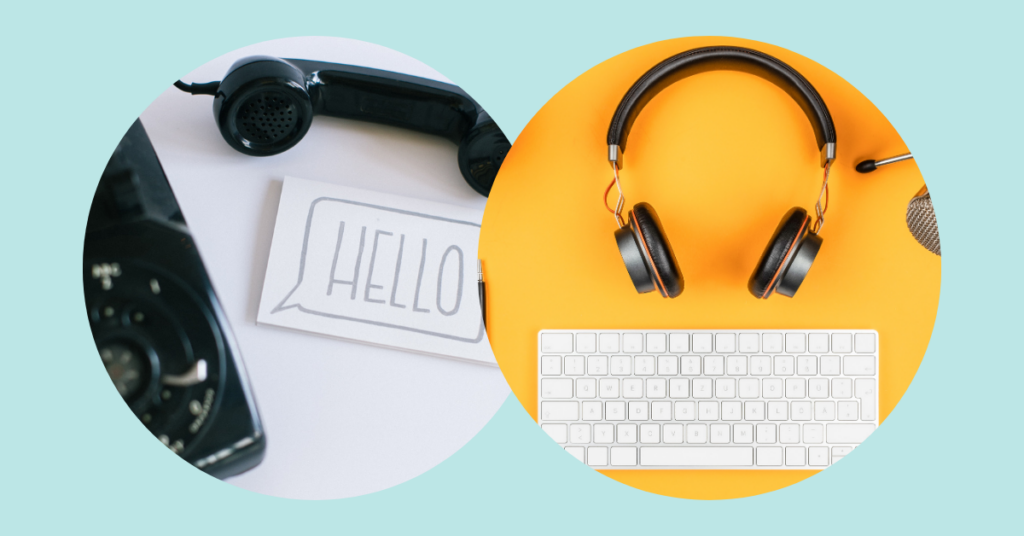
Subscribe to the show!
Are you subscribed to the School of Sellers podcast yet? If not, I want to encourage you to do that today so you never miss an episode. Subscribe on Spotify, Apple Podcasts, Stitcher, Amazon Music, or Google Podcasts!
If you’re feeling generous, I would be eternally grateful if you left me a review over on Apple Podcasts, too. Reviews help other sellers find my podcast just like you. Thank you!
Let’s connect!
Follow us on the podcast, the Facebook group for new sellers, the Facebook group for established sellers, YouTube, Instagram, and TikTok!
